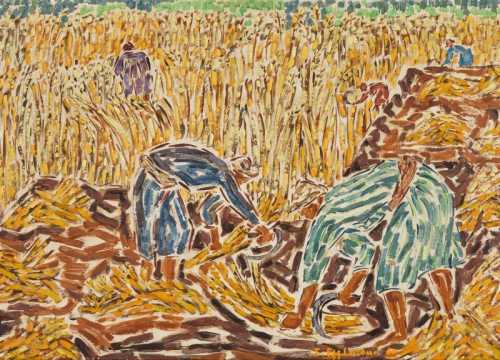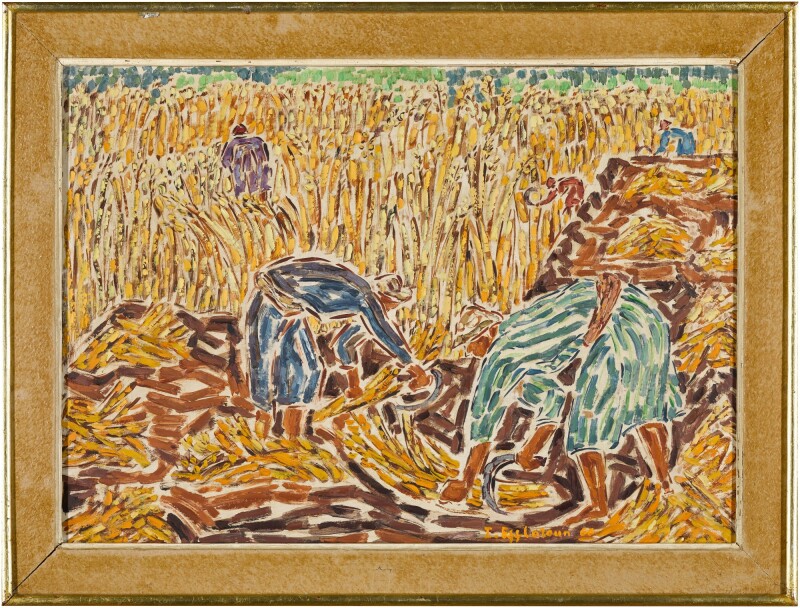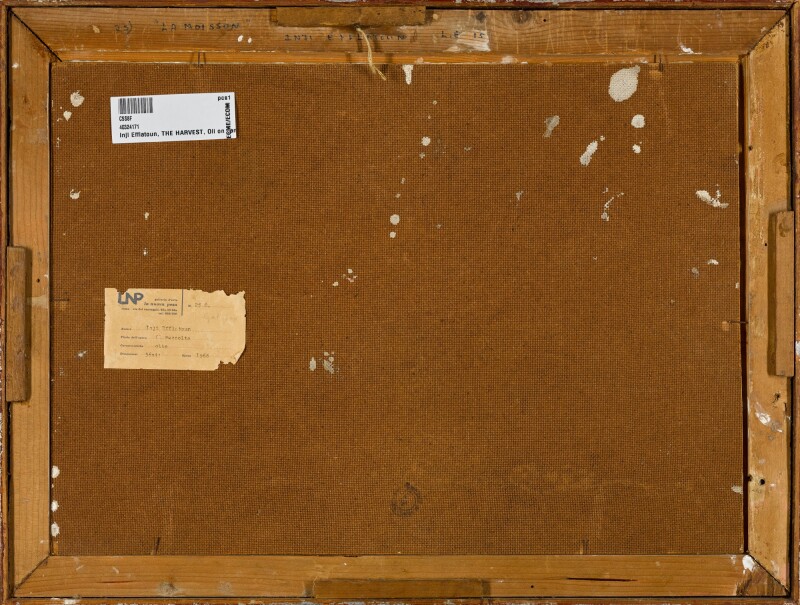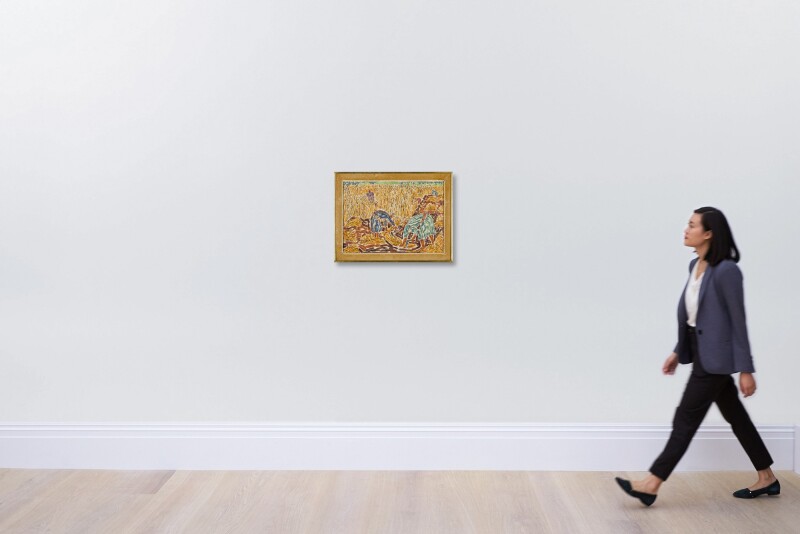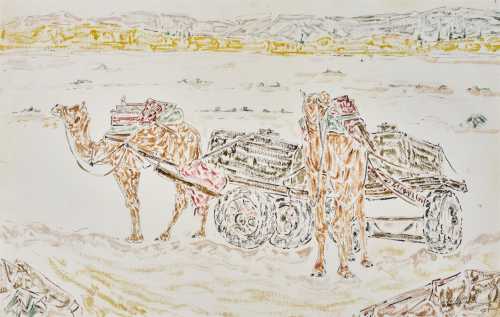- La Moisson (The Harvest) 1966
- oil on board
- Painting
- 56 * 40 cm
- signed and dated '66
framed: 49 by 65 cm. 19¼ by 25½ in.
23 March 2022
Estimation
£10,000
13,184 USD
-
£15,000
19,776 USD
Realized Price
£20,160
26,579 USD
61.28%
Artwork Description
Inji Efflatoun (1924-1989) was a pioneering Egyptian painter, whose practice was deeply connected to her involvement in feminist and Marxist movements. Born in Cairo to an aristocratic family , she displays an early interest for painting, and studies under the mentorship of artist Kamal ElTelmissany. He introduces her to surrealist and cubist movements, and Efflatoun finds herself as an early participant of the “Art and Freedom Group” exhibitions, along other intellectuals and artists exploring themes of surrealism . In 1942, she joins the Iskra, a Communist youth party. From this point on, her political and social engagement grows exponentially, sometimes at the expense of her artistic career. In 1945, she creates the Rabitat Fatayat à jami'wa al ma' ahid (League of University and Institutes' Young Women). In 1949, Efflatoun becomes one of the founding members of the First Congress of the First Peace Council of Egypt and later joins Harakat ansar al salam (Movement of the Friends of Peace). After the 1959 repression, she remains to be one of the only Egyptian artists to be imprisoned for more than four years, following which she decides to dedicate herself to painting. Previously, her work had been leaning towards social realism. After her liberation, however, her style is described as becoming lighter and merrier, as she uses bright colour to represent daily scenes of life in the countryside. Referred to as a “bucolic tapestry of freedom” (Egypt Today), her paintings from this period are said to convey the sense of liberation and hope she felt as she left prison.
This painting depicts the harvest season in Kafr Shokr, near her family’s home and farm. While revealing of Efflatoun’s persisting marxist inclinations for workers’ life conditions despite her recent traumatic experience, this peaceful composition also denotes a newly found appreciation for the simple things in life.
More lots by Inji Aflatoun
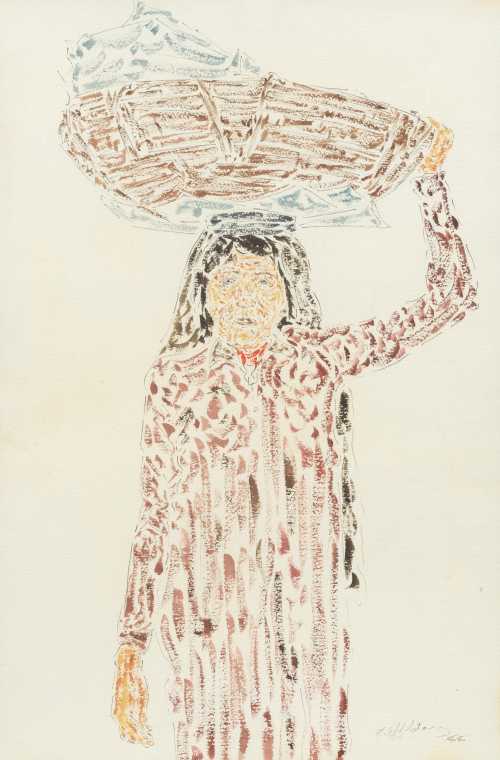
Standing Fellaha
Estimation
£8,000
10,667 USD
-
£12,000
16,000 USD
Sale Date
Bonhams
-
25 November 2025

Work in the Field
Estimation
£8,000
10,667 USD
-
£12,000
16,000 USD
Sale Date
Bonhams
-
25 November 2025
Realized Price
51,944 USD
Min Estimate
20,596 USD
Max Estimate
31,602 USD
Average Artwork Worth
+144.637%
Average Growth of Artwork Worth
Sales Performance Against Estimates
Average & Median Sold Lot Value
2021 - 2025
Performance vs. Estimate
2021 - 2025
Sell-through Rate
2021 - 2025
Similar Artworks

Fan Power
Estimation
£8,000
10,496 USD
-
£12,000
15,744 USD
Realized Price
£21,420
28,103 USD
114.2%
Sale Date
Christie's
-
4 November 2024
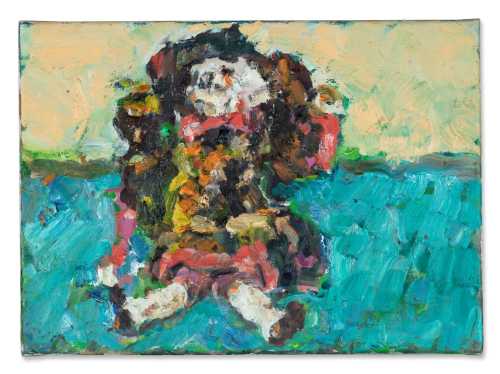
Marionette
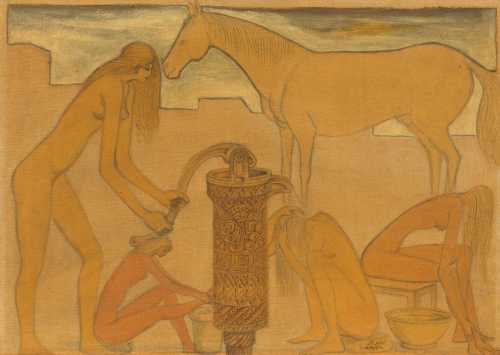
The Fountain
Estimation
£10,000
13,333 USD
-
£12,000
16,000 USD
Realized Price
£15,360
20,480 USD
39.636%
Sale Date
Bonhams
-
25 November 2025
